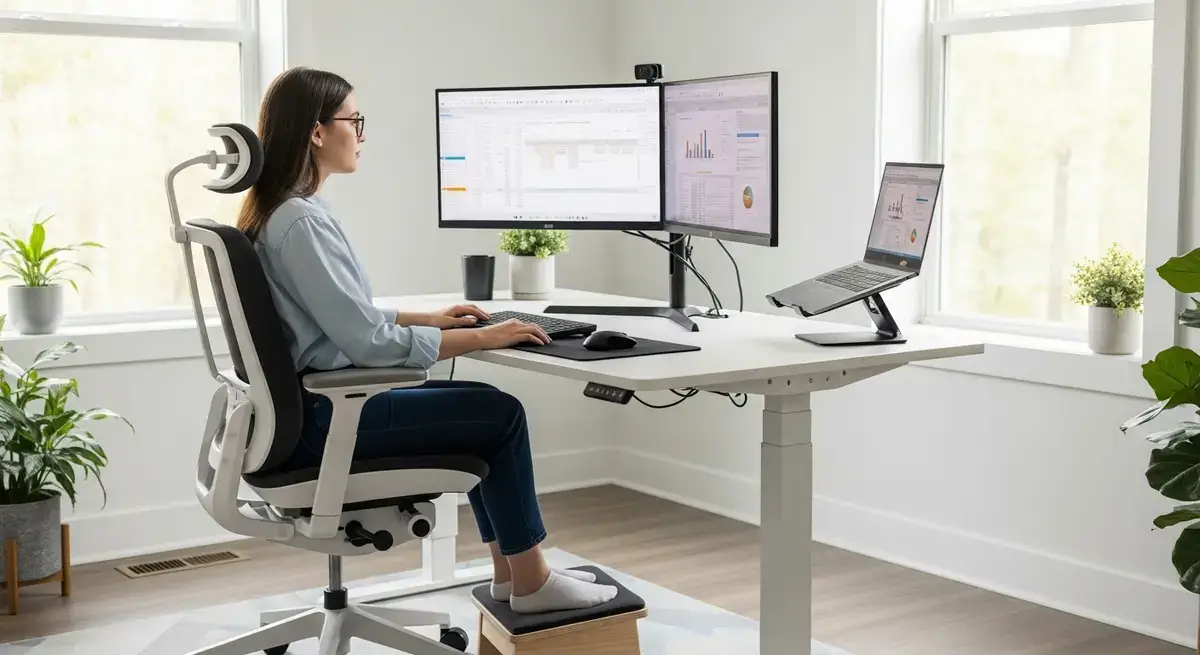Design Your Home Office for Maximum Comfort and Productivity
In today’s world of remote work, setting up an ergonomic home office isn’t just a luxury—it’s essential. An ergonomic workspace boosts your productivity, reduces discomfort, and supports your overall well-being. When your setup prioritizes comfort and proper posture, you’ll find fewer aches, improved focus, and a much more enjoyable workday.
Crafting a Comfortable and Practical Workspace
Start by Evaluating Your Space
Before investing in furniture or gadgets, take a good look at your available area. Measuring and understanding your workspace will guide smarter purchases and better layouts. Pay attention to natural lighting—ample indirect light can ease eye strain and make your work environment more pleasant.
Choose a Desk That Adapts to You
Desk height is a game-changer for comfort. Consider an adjustable desk like the Uplift V2 Standing Desk, which lets you switch between sitting and standing with ease. Position your desk to allow for natural movement and keep it clutter-free—this encourages better organization and a smoother workflow.
Invest in an Ergonomic Chair That Supports Your Body
A good chair supports your spine and adapts to your needs. Look for options with multiple adjustments, such as the Steelcase Gesture, designed to fit a variety of body shapes. Don’t forget about your feet—keep them flat on the floor or on a footrest to maintain proper alignment and reduce fatigue.
Setting Up Your Equipment for Seamless Efficiency
Position Your Monitor for Neck-Friendly Viewing
Avoid neck strain by placing your monitor at eye level. The ideal distance between your eyes and the screen is between 20 and 40 inches. This arrangement promotes healthy posture and makes working more comfortable.
Arrange Your Keyboard and Mouse for Neutral Wrist Posture
Keep your wrists relaxed by positioning your keyboard so your elbows form a 90-degree angle. Using a separate mouse can further reduce strain. Thoughtful placement of these tools is key to long-term wrist and arm health.
Keep Essentials Within Easy Reach
Reduce unnecessary stretching by keeping frequently used items like your phone, notepad, and pens close at hand. Adding accessories such as wrist rests, document holders, and footrests can also boost your comfort and efficiency throughout the day.
Creating an Inviting and Healthy Workspace
Minimize Distractions and Enhance Ambiance
Noise can disrupt your focus, so consider using noise-canceling headphones to create a quieter environment. Incorporate calming decor elements like plants and soothing colors to make your workspace more welcoming and stress-free.
Prioritize Movement and Stretching
Sitting for long periods can take a toll on your body. Make it a habit to take regular breaks for walking and stretching. Simple desk exercises can help keep your muscles active and reduce tension, keeping you feeling energized all day.
Tailoring Your Setup to Fit Your Unique Needs
Ergonomic Tips for Laptop Users
Laptops can be tricky ergonomically. Using a laptop stand raises the screen to eye level, helping prevent neck strain and encouraging better posture while you work.
Customize Your Workspace for Comfort
Ergonomics isn’t one-size-fits-all. Adjust your setup based on what feels right for your body and work style. Pay attention to how your body responds and don’t hesitate to make changes to enhance your comfort and productivity.
We’d Love to Hear From You!
Have you created an ergonomic home office? Share your tips or experiences in the comments below! For more insights on optimizing your workspace, explore these helpful resources: Ergonomic Workstation Guidelines | Tips for Remote Workers.


